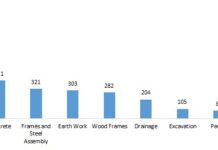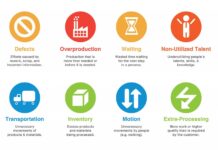Construction is a dangerous industry. Between 2012 and 2014 alone, over 500 Indian and 382 Nepalese migrant workers died building stadiums for the 2022 World Cup in Qatar. Even prominent figures like architect Zaha Hadid dismissed worker safety as the government’s problem, not hers. This highlights a critical disconnect: design and construction are often treated as separate entities, with little collaboration on safety implications. But what if they weren’t?
Lean practices, originally focused on improving construction productivity, have revealed a powerful side effect: better planning leads to safer worksites. The Last Planner System®, a method for coordinating weekly construction tasks, showed that only 54% of jobs were completed as scheduled. By simply planning work properly, teams drastically reduced accidents, because fewer workers had to improvise dangerous shortcuts when unexpected issues arose.
The Hidden Link Between Unplanned Work and Unsafe Work
One contractor discovered a startling pattern: most accidents started with the phrase, “I was planning to do X, but then Y happened, so I directed my crew to do Z.” Unplanned work almost always means unsafe work. By forcing foremen to write down new tasks, assess risks, and create safety plans before proceeding, one company slashed both quality issues and injuries.
This principle extends beyond construction. At Alcoa, CEO Paul O’Neill prioritized zero workplace injuries. His approach wasn’t about cost; it was about fixing the underlying causes of accidents. Within 24 hours of any incident, he demanded reports on root causes and preventative measures. The result? Not only did safety improve, but quality, efficiency, and profits all rose as well. Identifying safety issues exposed systemic flaws in processes, leading to comprehensive improvements.
Prevention Through Design: A Paradigm Shift
Lean and Last Planner focus on workflow. But what happens when safety is prioritized first in the design phase? Many assume safety and cost are trade-offs. This is often false. Up to 60% of construction accidents originate in design flaws. Imagine a worker falling from a roof; a better-planned structure could have prevented the hazard entirely.
Design dictates construction sequence, material choices, access, and equipment needs. Without builder input, designs often create dangerous conditions. For example, architects may specify lights in inaccessible locations, forcing workers to take unnecessary risks to install them.
The problem isn’t just aesthetics; it’s a lack of communication. One architect recalled designing CMU walls with center scoring on both sides, only to be told by a frustrated foreman that this made alignment impossible. These issues surface only when builders are actually building.
Moving Beyond PPE: Eliminating Hazards at the Source
Personal Protective Equipment (PPE) is essential, but it’s the least effective safety measure. The most impactful strategy is to eliminate hazards entirely. What does this look like in practice?
- Safe Access: Design permanent, safe access for construction, operation, and maintenance.
- Prefabrication: Use offsite prefabrication to reduce on-site hazards.
- Hazard Identification: Identify potential falls and other risks during design.
- Simpler Construction: Prioritize easier, safer construction methods.
New Lean design practices like Target Value Delivery (TVD) and Set-Based Design encourage collaboration between designers and builders early on. Cross-functional teams can identify and eliminate hazards before they become problems.
A New Approach: Learning from Past Mistakes
The key is to learn from past projects. One builder constructing a YMCA with a mix of precast, CMU, and steel discovered confusing embed locations in the design. The design team improved the second facility by incorporating builder feedback, reducing errors.
Similarly, an architectural team facing budget cuts on a university project simply asked a mechanical subcontractor to design the system within cost. By involving the installer early, they avoided endless value engineering cycles.
The Bottom Line
Designing with construction in mind would lead to safer, higher-quality projects, reduced schedules, and lower costs. It requires a shift in mindset: safety isn’t an afterthought; it’s a fundamental design principle. By uniting architecture and construction through Lean practices, we can build a safer, more efficient future for everyone involved.

















































